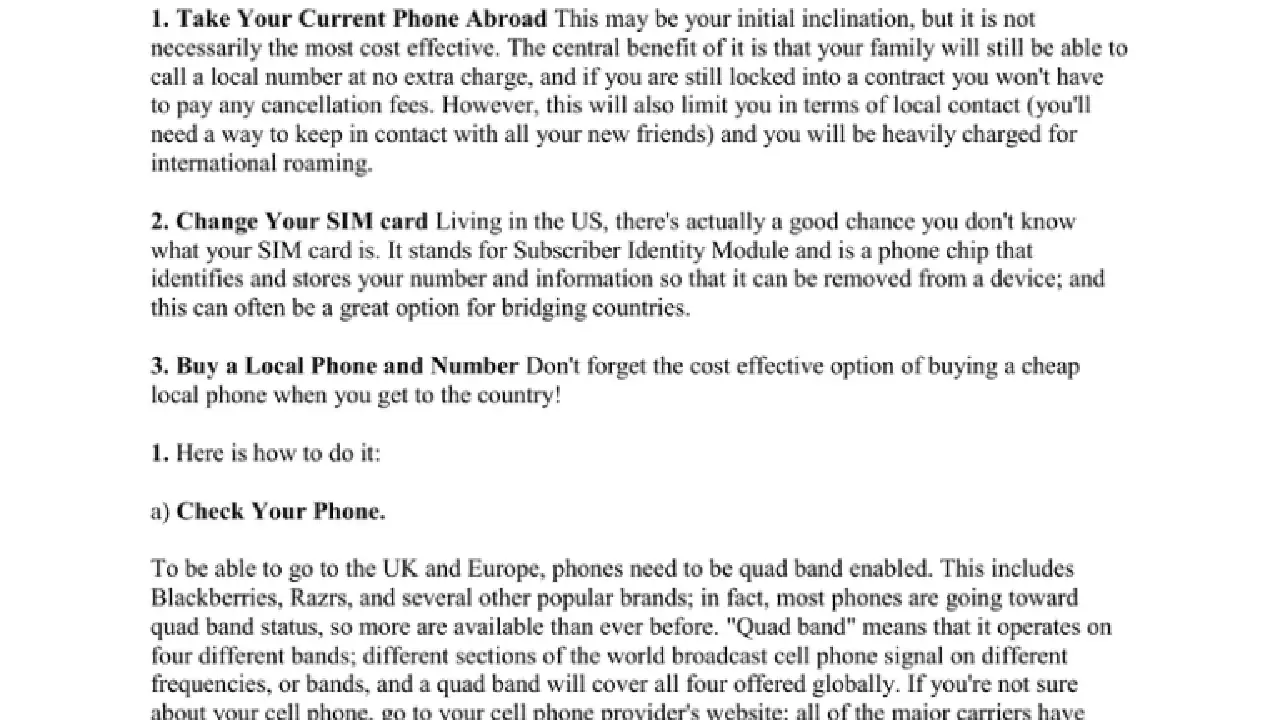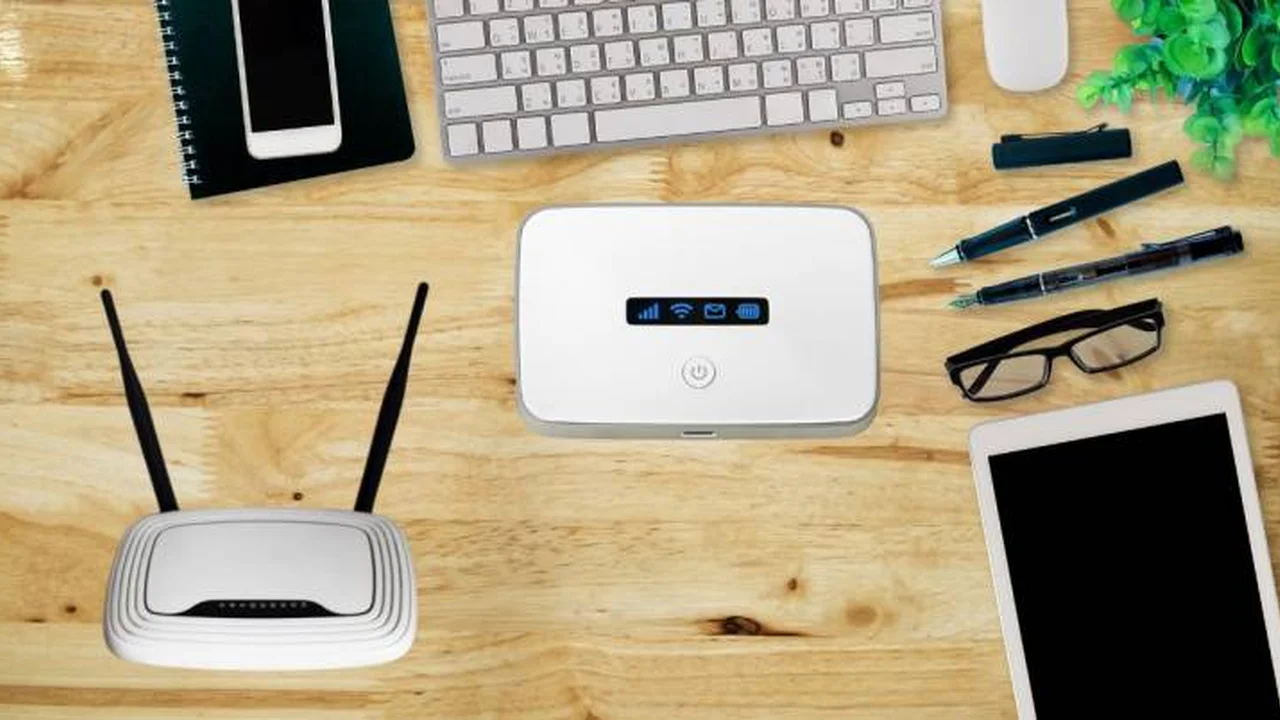Europe Travel: Staying Connected with US Cell Phones
Sample meta description.

So, you're heading to Europe! Awesome! But before you pack your bags and dream of croissants and cobblestone streets, let's talk about something super important: staying connected. We all rely on our phones these days, from navigating unfamiliar cities to posting envy-inducing travel pics. But using your US cell phone in Europe can be a surprisingly tricky and expensive situation. Don't get caught out with roaming charges that could bankrupt a small nation! This guide is your lifeline to affordable and reliable connectivity while exploring the Old Continent.
Understanding Your Options for European Cell Phone Connectivity
First things first, let's break down the main ways to stay connected. You've got a few choices, each with its pros and cons:
- International Roaming with Your US Carrier: This is the easiest option in theory, but often the most expensive. Your carrier essentially allows you to use foreign networks, but at a premium.
- Buying a Local SIM Card: Pop out your US SIM and replace it with a local one. This usually gives you the best value for data and calls.
- Using Wi-Fi: Free Wi-Fi is everywhere, right? Not quite. While plentiful in cafes and hotels, relying solely on Wi-Fi can be unreliable and insecure.
- eSIM (Embedded SIM): A digital SIM card that you can download and activate on your phone without physically swapping anything. Super convenient!
- Portable Wi-Fi Hotspot (MiFi): A dedicated device that creates a Wi-Fi network using a local SIM card. Great for groups or if you need to connect multiple devices.
The Perils of International Roaming: Avoid the Bill Shock
Let's be real – roaming with your US carrier is almost always the worst option for your wallet. While some carriers offer international plans, they often come with limited data, expensive overage charges, and slower speeds. Imagine uploading a few vacation photos and suddenly getting a notification that you've racked up a $50 bill! Before you even consider this option, carefully read the fine print of your carrier's international plan. Ask about data limits, call charges, and what happens if you exceed your allowance. Seriously, do your homework! The potential cost savings of other options are significant.
Local SIM Cards: The Budget-Friendly Champion for Europe Travel
Buying a local SIM card is often the most cost-effective way to get data and calls in Europe. You essentially become a local subscriber for the duration of your trip. The benefits are numerous: lower data rates, cheaper calls (especially to local numbers), and often better network coverage. You can usually find SIM cards at airport kiosks, mobile phone stores, and even some supermarkets. Just make sure your phone is unlocked (meaning it's not tied to a specific carrier) before you go. To find the best deals, research local carriers in the countries you'll be visiting. Vodafone, Orange, and TIM are popular choices in many European countries. Compare their prepaid plans and data allowances to find the best fit for your needs.
Important Note: Remember to bring a SIM card ejector tool (or a paperclip) to remove your US SIM card. Also, keep your US SIM card safe and secure so you can reinsert it when you return home!
Wi-Fi: A Great Supplement, Not a Primary Solution for Staying Connected
Free Wi-Fi is definitely a perk, and you'll find it in many cafes, restaurants, hotels, and even some public spaces. However, relying solely on Wi-Fi is risky. The connection can be slow, unreliable, and even insecure. Public Wi-Fi networks are often vulnerable to hackers, so avoid entering sensitive information like passwords or credit card details while connected. Think of Wi-Fi as a bonus, not your primary source of connectivity. Use it to check emails or browse websites, but don't rely on it for important tasks like navigation or making urgent calls.
eSIM: The Future of Travel Connectivity in Europe
eSIMs are a game-changer for travelers! Instead of physically swapping SIM cards, you can download and activate a digital SIM directly onto your phone. This is incredibly convenient, especially if you're visiting multiple countries. Several companies offer eSIM plans specifically for Europe, providing data and calls at competitive rates. Airalo and Holafly are popular choices. Before you purchase an eSIM, make sure your phone is compatible. Most newer smartphones support eSIM technology, but it's always best to check your phone's specifications. The activation process is usually simple and straightforward, involving scanning a QR code or entering a confirmation code. eSIMs are a fantastic option for tech-savvy travelers who want a hassle-free way to stay connected.
MiFi: Your Personal Wi-Fi Hotspot for Group Travel in Europe
A portable Wi-Fi hotspot (MiFi) is a small, dedicated device that creates a Wi-Fi network using a local SIM card. This is a great option if you're traveling with a group or if you need to connect multiple devices, such as your phone, tablet, and laptop. You can purchase a MiFi device before you leave or rent one upon arrival in Europe. The cost will vary depending on the device and the data plan you choose. GlocalMe and Skyroam are popular brands that offer MiFi devices with international coverage. MiFi devices are also a good choice if you want to avoid draining your phone's battery by using it as a hotspot.
Product Recommendations: Staying Connected with Confidence in Europe
Okay, let's get down to specific product recommendations to help you stay connected on your European adventure:
Airalo eSIM: Seamless Connectivity Across Europe
Product: Airalo eSIM for Europe (various data packages available)
Use Case: Perfect for travelers visiting multiple European countries who want a hassle-free and affordable way to stay connected. No need to physically swap SIM cards – just download and activate the eSIM.
Comparison: Airalo stands out for its ease of use, competitive pricing, and wide range of data plans. It's a great alternative to roaming with your US carrier or buying individual SIM cards in each country.
Price: Prices vary depending on the data package and validity period, but you can typically find plans ranging from $5 for 1GB to $30 for 10GB.
Holafly eSIM: Unlimited Data for Worry-Free Browsing
Product: Holafly eSIM for Europe (unlimited data plans)
Use Case: Ideal for travelers who need a lot of data for streaming videos, video calling, or working remotely. Holafly offers unlimited data plans, so you don't have to worry about running out.
Comparison: Holafly's unlimited data plans are a major selling point, but they can be more expensive than Airalo's limited data options. Consider your data usage needs when choosing between the two.
Price: Holafly's unlimited data plans typically start around $27 for 5 days and go up to $79 for 30 days.
GlocalMe G4 Pro: Reliable MiFi Hotspot for Group Travel
Product: GlocalMe G4 Pro Portable Wi-Fi Hotspot
Use Case: Perfect for families or groups traveling together who need to connect multiple devices to the internet. GlocalMe offers flexible data plans and reliable coverage in many European countries.
Comparison: GlocalMe is a well-established brand with a reputation for quality and reliability. The G4 Pro supports up to 10 devices simultaneously and has a long battery life.
Price: The GlocalMe G4 Pro device typically costs around $150, and data plans are sold separately.
Vodafone Prepaid SIM Card: Local Connectivity in Specific Countries
Product: Vodafone Prepaid SIM Card (available in various European countries)
Use Case: A good option if you're primarily staying in one or two countries and want the best possible local connectivity. Vodafone is a major European carrier with excellent coverage and competitive pricing.
Comparison: Vodafone offers a wide range of prepaid plans to suit different needs. You can typically find SIM cards with generous data allowances and affordable call rates.
Price: Prices vary depending on the country and the data plan, but you can usually find SIM cards for around €10-€30.
Tips for Choosing the Right Option for Your European Trip
So, which option is right for you? Here are a few things to consider:
- Your Destination: Some options are better suited for specific regions. For example, a local SIM card might be the best choice if you're spending a lot of time in one country.
- Your Data Needs: How much data do you typically use per day? If you're a heavy user, an unlimited data plan or a MiFi device might be a good choice.
- Your Budget: Consider the cost of the device, the data plan, and any potential roaming charges.
- Your Tech Savvy: Are you comfortable using eSIM technology? If not, a local SIM card or a MiFi device might be easier to manage.
- Number of Devices: If you need to connect multiple devices, a MiFi device is the way to go.
By carefully considering your needs and comparing the different options, you can find the perfect solution for staying connected on your European adventure. Happy travels!
:max_bytes(150000):strip_icc()/277019-baked-pork-chops-with-cream-of-mushroom-soup-DDMFS-beauty-4x3-BG-7505-5762b731cf30447d9cbbbbbf387beafa.jpg)






